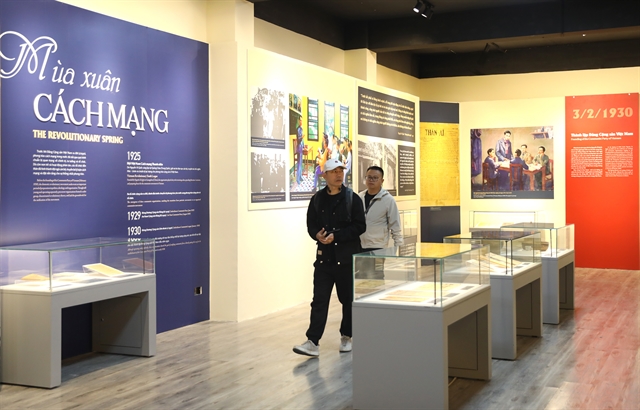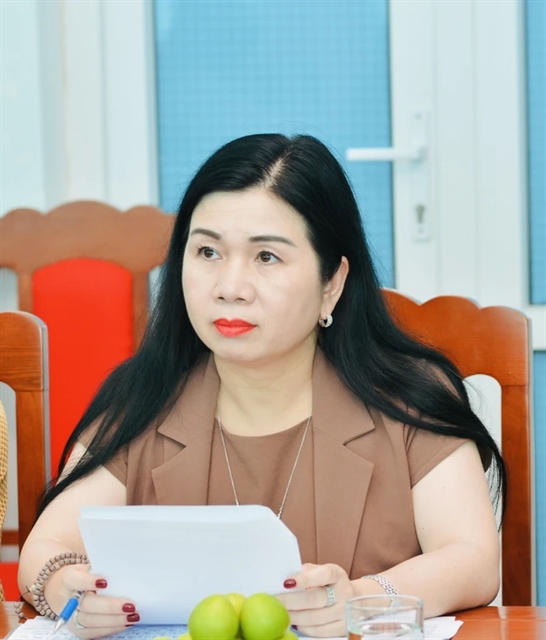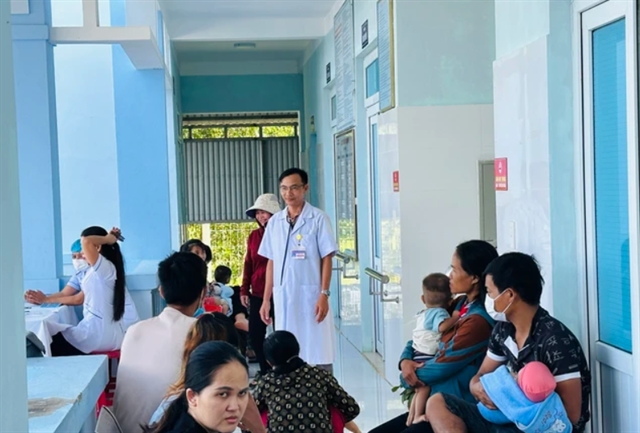 Society
Society

 |
| Phan Lê Thu Hằng, Deputy Director of the Department of Planning and Finance at the Ministry of Health and Director of the Central Project Management Unit. VNA/VNS Photo Minh Nghĩa |
HÀ NỘI - The Project for Investment and Development of Primary Healthcare Services System, funded by loans and grants from the World Bank (WB), has been operating since 2020. The project holds significant importance for the healthcare sector, particularly for the primary healthcare network in thirteen economically and socially disadvantaged provinces.
In an interview with the VNA, Phan Lê Thu Hằng, Deputy Director of the Department of Planning and Finance at the Ministry of Health and Director of the Central Project Management Unit, provided insights into the project's achievements so far.
Could you provide details on the progress of the Project for Investment and Development of Primary Healthcare Services System being implemented in the 13 provinces?
The project is designed to enhance the quality and efficiency of healthcare services in the primary healthcare network of 13 provinces. It is being executed at the central level and in 13 provinces, including Hà Giang, Bắc Kạn, Sơn La, Yên Bái, Hòa Bình, Quảng Bình, Quảng Trị, Quảng Ngãi, Ninh Thuận, Trà Vinh, Hậu Giang, Bạc Liêu, and Long An.
The project adopts a comprehensive investment strategy: upgrading infrastructure, renewing medical equipment, training healthcare personnel, improving health education communication activities, supporting the completion of policy frameworks related to primary healthcare and piloting innovative primary healthcare service delivery models.
The project is expected to enhance the capacity of the primary healthcare network, thereby ensuring health, increasing life expectancy and improving the quality of life for people in difficult areas.
Regarding funding scale, the Investment in and Development of Primary Healthcare Services System project is one of the largest investment projects in the healthcare sector, with a total budget of approximately US$120 million. This reflects the healthcare sector's strategy of prioritising investment resources for providing essential healthcare services in challenging areas.
On a governance level, this is considered one of the first projects in the healthcare sector implemented under a new governance model that maximises local autonomy, whereby the project provinces act as the main investors for the sub-projects implemented in their areas. This governance model promises to have a long-term positive impact on the project management capacity of localities, which previously relied heavily on central-level management structures.
 |
| Medical staff provide health consultations to people visiting Cam Chính Commune Health Station, Cam Lộ District, Quảng Trị Province. VNA/VNS Photo |
Could you share the initial results of the project in these thirteen provinces?
The project was implemented on May 18, 2020, coinciding with the onset of the COVID-19 pandemic, posing significant challenges in the first two years. Despite this, the project has received decisive direction from the Ministry of Health, the efforts of the thirteen provincial People's Committees, the commitment of the Central Project Management Unit and provincial project management boards and enthusiastic support from donors to promote activities aimed at achieving the best results.
After more than four years of implementation, the project has achieved expected results. The latest evaluation by the Ministry of Health and the World Bank in May 2024 shows that despite serious objective challenges such as the negative impacts of COVID-19 and changes in ODA disbursement and project management policies of the Government, the project is still rated as meeting requirements. The World Bank recognises this project as the best-evaluated among all healthcare projects funded by the World Bank in Việt Nam.
In terms of investment, 412 construction projects, including upgraded or newly built health stations and medical centres in 109 districts/towns of the thirteen project provinces, have been completed and put into use, reaching over 86 per cent of the planned projects. The remaining projects are under construction and are expected to be fully completed by November 2024. Most provinces have also signed contracts to deliver essential equipment to local health stations, thus supplementing the stations with equipment for professional tasks.
 |
| Residents bring their children for vaccinations at Cam Tuyền Commune Health Station, Cam Lộ District, Quảng Trị Province. VNA/VNS Photo |
How has the project specifically implemented capacity-building for primary healthcare staff?
The capacity-building component of the project, using grant aid from the World Bank and co-financiers, aims to address the capacity shortfall of primary healthcare staff. The project's training focuses on enhancing service delivery and managing priority health issues at the primary level, such as hypertension, diabetes, cervical cancer, maternal and child care, tuberculosis, chronic obstructive pulmonary disease, acupuncture and rehabilitation.
To ensure sustainable capacity building, the project develops a comprehensive training plan with a two-step approach: training provincial trainers (TOT) and training primary healthcare staff. This method ensures that after training, provincial trainers can conduct capacity-building sessions for all commune-level staff in the thirteen project provinces. The coverage rate of trained commune health staff is high. Provincial trainers, besides training commune-level staff, also continue to supervise and support them after the project ends to ensure sustainable capacity maintenance.
To date, 1,857 provincial trainers and district supervisors have been trained (96 per cent of the total training plan) and 24,346 commune health staff have been trained (85.2 per cent of the training needs of the provinces).
Regarding initiatives to improve the quality of commune-level healthcare services, the project has designed and piloted a Quality Scorecard for health stations to self-assess service quality, enabling them to plan improvements for unmet service criteria. Both the World Bank and the Ministry of Health have evaluated this intervention as a technical highlight. In terms of coverage, by the end of 2024, the percentage of health stations applying the scorecard is expected to reach 56 per cent, more than double the initial plan, and in terms of policy impact, due to the outstanding results in the thirteen project provinces, the Ministry of Health has decided to conduct an in-depth evaluation of this initiative to provide a scientific basis for scaling it up.
The World Bank recognises this project as the best-evaluated among all healthcare projects funded by the World Bank in Việt Nam. Could you share lessons learned that other projects can learn from?
After four years of project implementation amidst many unfavourable objective factors, the project has drawn several valuable practical lessons, not only for the remaining phase of the project but also for other programmes and projects in the healthcare sector.
Firstly, the success of the project depends on the governance capacity of the participating localities, acting as the main investors for the sub-projects in their areas. Specifically, it involves the direction and coordination capacity of the provincial People's Committees, the coordination capacity among relevant provincial departments (Departments of Finance, Construction, Health, Provincial Project Management Boards), and the management capacity of the Provincial Project Management Boards.
Provinces need to persistently pursue the long-term goals set by the project but be flexible in their implementation solutions to adapt to changing contexts and environments. Regular and continuous coordination, support, guidance and supervision by the Central Project Management Unit and the World Bank for the project provinces is crucial, especially given the relatively limited project management capacity of many provinces.
Notably, the quality checklist model applied to commune health stations, designed by Central Project Management Unit experts, and the management and treatment model for non-communicable diseases at commune health stations with technical support from units have been evaluated as technical highlights of the project. VNS




